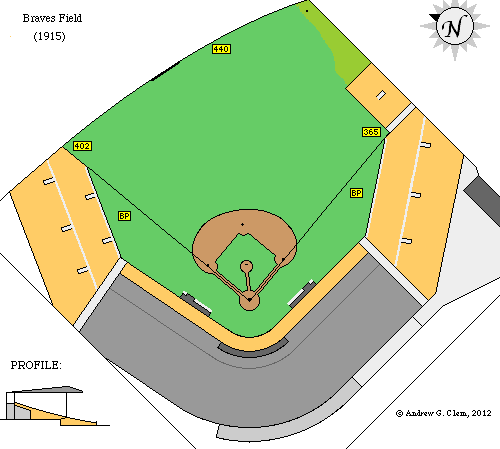|
CONTENTS
Save in 30-3 Game
No Grand Slams
28 Assists in One Game
Same Runner Out at Plate Twice
Same Home/Road Record, Proliferation of Playoffs
Surprise Grand Slam Leader
Boston "Braves" And Their Gigantic Home Field
Odd Baseball Facts - I
Odd Baseball Facts - II
Odd Baseball Facts - III
Odd Baseball Facts - IV
Odd Baseball Facts - V
Odd Baseball Facts - VI
Baseball Magazine
Golden Rankings Home
|
Odd Baseball
Facts Archive – VII
On August 22, 2007, the Texas Rangers met the Baltimore Orioles at Camden Yards.
- After three innings, Baltimore led 3-0.
- The Rangers then did something rarely seen in a baseball game. They went on a 30-0 tear. Every single one of the runs was earned.
- Texas banged out 29 hits, enjoyed 8 walks.
- As you would expect, several Oriole hurlers didn't fare well.
- Brian Burres surrendered 8 runs in 2/3 of an inning.
- Rob Bell allowed 7 runs in 1 1/3 frames.
- Paul Shuey took one for the team, giving up 9 runs in the last two innings.
The Odd Fact about this game involved a Rangers P.
- Kaston Gabbard pitched the first six innings for the visitors.
- Wes Littleton finished for manager Ron Washington.
Because Littleton entered with his team leading and pitched three full innings, he recorded a Save for protecting the 27-run lead!
|
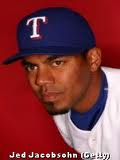
Wes Littleton
|
|
Jim Palmer pitched 19 ML seasons, all for the Baltimore Orioles.
- He took the mound in 558 games, not counting post-season appearances.
- He toiled 3,948 innings.
- He surrendered 303 HRs.
But Palmer has this distinction:
He never allowed a grand slam.
He has another distinction:
He is the only pitcher in big-league history to win World Series games in three decades (1966, 1970–71, and 1983).
|
The 1911 Pittsburgh Pirates were not known as a good fielding team. Still, they reached a new low on June 7 when they committed seven errors in a 9-4 loss to the league-leading New York Giants before 6,600 at Forbes Field.
- The Pittsburgh Post labeled the effort a "blunderfest" that included several other misplays that weren't ruled errors.
- Yet the Pirates that day set a record that still stands: 28 assists in a nine-inning game.
- Another oddity of the game was that no Pittsburgh outfielder registered a putout (although an easy fly was muffed as explained below).
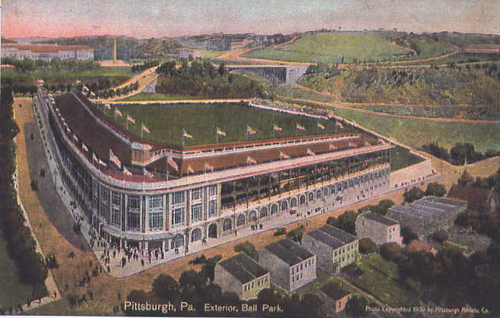
Forbes Field 1909 What one report called "some queer turns" contributed to the Pirates' spate of assists.
- Third inning: Two of the Giants' outs came on plays that produced multiple assists. With runners on first and second, CF Fred Snodgrass singled to CF. Tommy Leach threw home too late to stop the runner from second from scoring, but C Mike Simon threw to third to catch the runner from first, Art Fletcher. Then Leach grabbed Fred Merkle's single and again threw home to try to nip Snodgrass. P Babe Adams cut off the throw and threw to SS Honus Wagner, who threw to 1B Bill McKechnie to catch Merkle, who had rounded too far.
- Fifth inning: 3B Bobby Byrne and P Claude Hendrix fielded grounders and threw to McKechnie, who dropped each toss. Byrne and Hendrix were credited with assists even though no putout was made. One of the runners, Snodgrass, was later caught in a rundown between third and home with Hendrix, Simon, and Byrne all gaining assists.
- Hendrix had taken the mound for the first time in a major league game in the fourth and pitched quite well the rest of the way. In the fifth, he didn't allow a hit but still gave up four unearned runs thanks to a walk, three errors, and a passed ball.
- The muffed fly referred to above came in the fourth inning. When Leach injured his leg, Pirate skipper Fred Clarke replaced him with Jack Flynn, who didn't even play his normal position, 1B, very well. To minimize the damage Clarke put Flynn in RF and shifted Owen Wilson to center. In his very first inning in RF, Flynn camped under a routine fly but the ball slipped through his hands, nearly knocking him out. Wilson had to chase down the ball. Let the record show that this was the only game of his ML career in which Flynn "patrolled" the OF.
The Pirates' sloppy play infected the Giants as well as they committed five errors as well as one fielding blunder that resulted in a HR for Max Carey. Let Joe Dittmar tell the tale.
In the ninth inning, Carey sent a long fly to RCF. Both Red Murray and Fred Snodgrass raced after it, Murray having the better angle. Red just missed making the catch but ran another 30 feet before he could stop. Snodgrass stopped within a few feet of where the ball bounced but thought Murray had made the catch. Murray assumed that Snodgrass had fielded the sphere. Meanwhile, Carey, amid howls of the spectators, raced around the bases and crossed the plate before Al Bridwell, the SS, finally retrieved the ball.
Reference: "Team Makes 28 Assists in One Nine-Inning Game,"
Baseball Records Registry, Joseph J. Dittmar (1997)
Top of Page
|
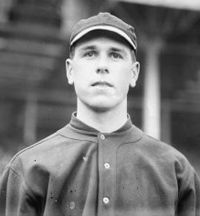
Fred Snodgrass
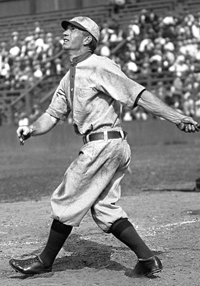
Tommy Leach
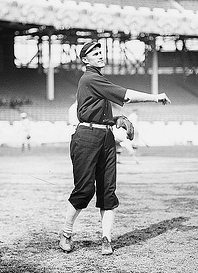
Art Fletcher
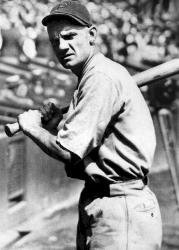
Max Carey
|
Same Runner Out at Plate Twice
 Phil Cavarretta Phil Cavarretta
|
It's rare to see a ball game in which two runners are thrown out at the plate. It's even more rare when the same player is thrown out at home twice in a game. And when that game is a Midsummer Classic, that's the rarest of all.
The 1944 All-Star game at Forbes Field, Pittsburgh, was the second straight played at night so that factory workers and service personnel could attend.
- 1B Phil Cavarretta of the Chicago Cubs walked in the bottom of the first. He moved to second on CF Stan Musial's infield hit and continued to third on 2B Bobby Doerr's wild throw. When the next batter, C Walker Cooper, hit a fly to RF, Cavarretta tried to score but was thrown out by Stan Spence.
- Phil spanked a triple with two out in the third but was stranded.
- In the fifth, Cavarretta walked to put runners at first and second. Musial reached on an error to load the bases. Cooper singled to LF, scoring the runner from third. However, LF Bob Johnson threw Cavaretta out at home, Phil vigorously questioning umpire
Cal Hubbard's call.
- Cavarretta singled and walked again to finish a perfect night at the plate.
|
Same Home/Road Record; Proliferation of Playoffs
The 1946 St. Louis Cardinals compiled the following home and road records.
- Home: 49-29 (.628)
- Road: 49-29 (.628)
- Total: 98-58 (.628)
You'll notice that 98 and 58 add up to 156.
- For most of the 20th century, the regular season consisted of 154 games.
- The 1946 NL pennant race ended in a tie between the St. Louis Cardinals and Brooklyn Dodgers.
- So, for the first time in ML history, a playoff was needed to decide the pennant winner. NL rules called for a best 2-of-3 series.
- The Cardinals won the first game at home and the second on the road to earn the right to meet the Boston Red Sox in the World Series.
After the NL and AL agreed to co-exist and play the first World Series in 1903, baseball went 43 years without a pennant playoff.
- Then, just two years after the '46 NL tie, the AL pennant race produced a dead heat between the Indians and Red Sox. Al rules called for a one-game playoff which Cleveland won.
- Three more seasons brought still another NL tie, necessitating the famous playoff between the Dodgers and New York Giants that ended on Bobby Thomson's HR.
Surprise Grand Slam Leader
David Eckstein is not remembered as a HR hitter.
- The 5'6" 170 lb SS from the University of Florida (where he walked on to the baseball team) hit just 35 HRs in 5,041 ML ABs for five different clubs over ten seasons (2001-2010).
- Yet he led the major leagues in grand slams in 2002 while helping the Anaheim Angels win their only World Series. Furthermore, two of his three slams that year came in back-to-back games at a time when the Angels needed a spark.
California had started poorly, 7-14, when they began a three game home series with Toronto on Friday, April 26. The Angels won the opener 4-0.
- In the second game, Eckstein capped a 7-run 5th by clearing the bases with a four-bagger off Scott Cassidy as the Angels clinched the series, 11-4.
- The final game dragged on to the 14th inning. After the Blue Jays scored a run to a take a 5-4 lead in the top of the frame, 3B Troy Glaus led off with a single against southpaw Pedro Borbon and went to third on DH Tim Salmon's double.
- 1B Scott Spiezio lined to SS before the Jays intentionally passed C Bengie Molina to load the bases. The strategy looked smart when 2B Adam Kennedy went down swinging.
- That brought up Mighty Mouse, hitless in his previous 6 ABs. On a 1-1 pitch, Eckstein crashed a HR over the LF fence.
- Afterwards, David said, "I was 1-for-7 today. I expect to do better than that, but I was very fortunate to get the game-winner. It was about time I did something."
On Sunday, June 9, the Angels hosted the Cincinnati Reds in an interleague game.
- The "X Factor" strode to the dish with the sacks loaded with two outs in the second and the home team leading 1-0 thanks to his triple and a groundout in the first inning.
- The diminutive SS fell behind 1-2, then smote his fourth four-bagger of the season to give the Angels a 5-run lead on their way to a 7-4 victory.
Eckstein finished the '02 season hitting .293 with 8 HRs. He finished 11th in the MVP voting.
|
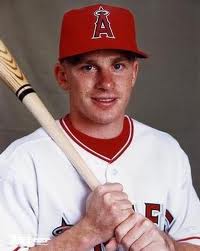
David Eckstein

Eckstein and wife Ashley, an actress
|
Boston "Braves" and Their Gigantic Home Field
When James Gaffney, a New York contractor, bought the Boston National League club in 1911, he became its third owner in just six years.
- He changed the team's nickname just as the previous two owners did.
- Originally the Red Stockings, the team became the Doves when John Dovey owned it in 1906-9.
- In 1909, with William Russell purchasing the club, Boston's NL team became the Rustlers.
- Gaffney named his new team the Braves because of his membership in Tammany Hall, the Democratic organization in New York City. Tammany members were called "braves," and the club's insignia was an Indian head named Tammany. Continuing the indian theme, the organization's headquarters was called the wigwam.
Gaffney knew that his club needed a new ballpark to compete with the crosstown Red Sox of the American League.
- Gaffney purchased a enormous lot measuring 850' by 675'.
- He wanted a field large enough "to hit an inside-te-park home run in any of the three outfield directions."
- So he built Braves Field with the dimensions shown in the diagram below. The owner proudly billed his creation as "the largest baseball park in the world."
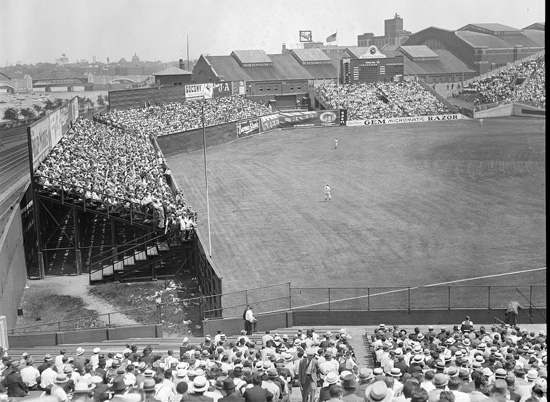
Braves Field in its early years |
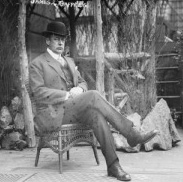
James Gaffney

Boston Braves Logo 1914
|
After opening on August 18, 1915, the park had no over-the-fence HRs for over a year.
- Adding to the challenge of the gigantic dimensions of the field, the wind generally blew in from the Charles River beyond the outfield.
- Only eight HRs were hit in the first full season of action at the park, and all of those were inside-the-park.
- Walton Cruise of the St. Louis Cardinals smacked a ball into the RF bleachers (later known as the "Jury Box") on May 16, 1917. That was the first over-the-fence four-bagger.
- The next "traditional" HR also came from Cruise, now with the Braves, on August 16, 1921 over the RF wall.
- Three more clouts went into the RF bleachers before the first HR cleared the LF fence on May 28, 1925. The culprit was Frank Snyder of the New York Giants. That was also the first clout completely out of the park, the ball landing on the railroad tracks behind the bleachers.

Braves Field a week before its opening with the Charles River in the background
The dimensions were finally shortened in 1928 with the erection of bleachers in LF.
|
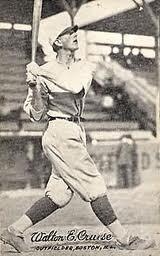
Walton Cruise
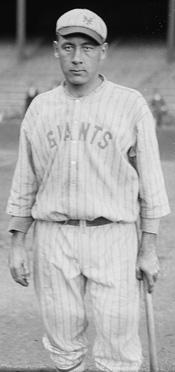
Frank Snyder
|
|
|
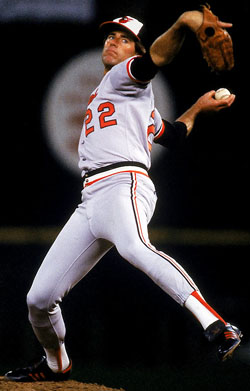






 Phil Cavarretta
Phil Cavarretta

